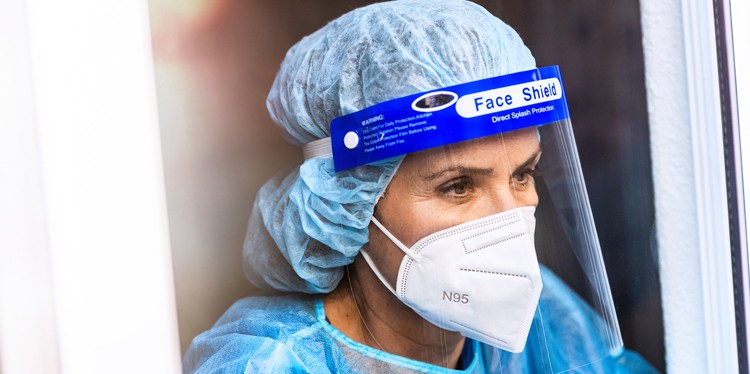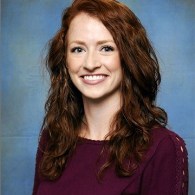Speech therapists (speech-language pathologists) on the front lines

Front-line workers are overwhelmed treating our COVID-affected patients. But it’s not just doctors and nurses that are on the front line. Assistants, environmental services and many other specialists are busy treating these patients. Transportation is moving them from one area to the next. And speech-language pathologists (SLPs) are also right there in the thick of things.
Currently, four of the SLPs at Hennepin Healthcare are working in two-week rotations with patients who are COVID positive, to avoid exposure. Katie Bangston, CCC is one of those SLPs.
SLPs evaluate patients at the bedside. They evaluate the speaking and swallowing conditions of patients who have been intubated (put on a ventilator) and those who have not. When assessing swallowing capabilities, patients are not able to wear masks. Spending 15 – 30 minutes face-to-face with these patients puts SLPs at risk. Katie explains, “Swallow evaluations are considered aerosol-generating procedures (AGPs) which release particles or droplets into the air. Sometimes, patients cough when they are having trouble swallowing. A cough is a person’s protective response to something going down the wrong way when swallowing. COVID spreads through particles produced when a person coughs, so our personal protective equipment (PPE) is so important. Sometimes patients need a Modified Barium Swallow Study (an x-ray that shows how your muscles are moving when you swallow) to test their ability to swallow when we are unable to get enough information at the bedside. This test is done in radiology, so patients need to be transported there.”
Some critically ill patients with COVID may need to be placed on a ventilator. Vents allow patients to breathe but sometimes damage speaking and swallowing functions. To avoid damage that is inflicted with long-term ventilated patients, physicians occasionally perform tracheostomies and then wean patients off the ventilator slowly. SLPs can help some of these patients swallow and use their voice to communicate after they have had a tracheostomy placed, using a special tool called a Passy Muir Speaking Valve.
Nurses can help SLPs by recognizing possible dysphagia (swallowing disorders,) and alert SLPs when to address this problem.
The importance of prompt evaluation and management of dysphagia in this population is critical to lessen further injury to the patient’s respiratory system from aspiration (bringing things into your airways such as food or saliva). Patients admitted with COVID often come from nursing facilities and some may already have a pre-existing swallowing disorder (dysphagia) and are experiencing a further worsening of their swallow function with severe illness. Further, COVID patients who eventually get extubated (removal of the vent tube) are severely weakened and have a higher risk of aspiration or dysphagia due to their weakened state.
Patients with COVID also occasionally require treatment for voice and cognitive changes. SLPs also evaluate patient’s cognitive abilities, such as memory by asking them simple things like what time is it, what day it is, what is their name, etc.
And, with COVID patients who spend a long time in the hospital, Katie says, “physical isolation and the lack of interactions with loved ones may also affect recovery.”

Katie Bangston, CCC, is a speech-language pathologist at Hennepin Healthcare. She is currently working with inpatients who have experienced strokes, traumatic brain injuries, illness from COVID-19, swallowing, and other neurological problems.

